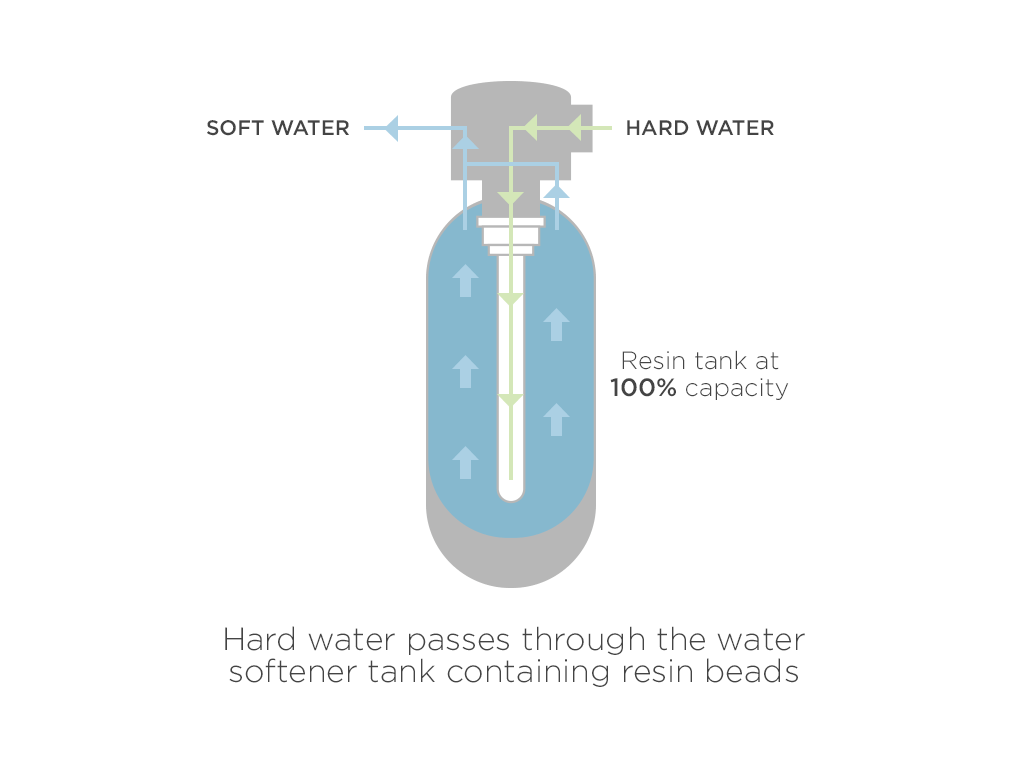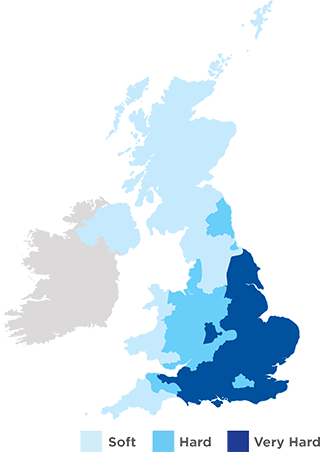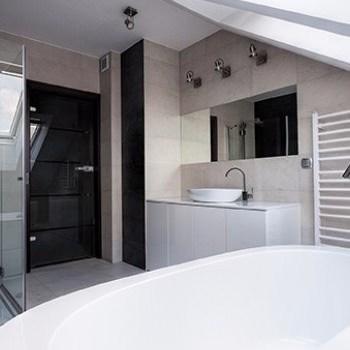Water Softeners Buying Guide
We have developed a buying guide with useful information about water softeners and drinking water filters.
What is a Water Softener?
A water softener is an appliance which removes the calcium and magnesium minerals from hard water.
All water softeners use a process called ion-exchange to soften water. This is done by passing the hard water through a cylinder in the water softener containing small food grade polymer beads, also known as resin. The calcium and magnesium in the water are attracted to the resin beads and attach themselves to them; releasing a sodium ion in the process. Once the cylinder of resin beads is saturated with calcium and magnesium ions it needs to regenerate. The water softener produces a brine solution which is flushed through the resins beads in the cylinder, removing the calcium and magnesium ions in the process. The brine solution is flushed down the drain and does not enter the water supply. Once the regeneration process is complete, the appliance is ready to continue the water softening process.
There are several types of water softener available depending on your budget, house size and desired level of performance.
A single-tank water softener has one tank containing resin beads to treat the hard water. It has a metering system to measure the amount of water used, and once the resin tank has reached capacity, it needs to regenerate. During the regeneration process, the water softener goes into bypass. No soft water is available during this time.

A twin-tank water softener has two tanks instead of one. A metering system measures the amount of hard water passing through a tank. When the first tank has reached capacity and needs regenerating, it immediately switches to the second tank and continues delivering soft water. The first tank is regenerated and when completed, remains on standby until needed. The best twin-tank water softeners also use soft water during the regeneration cycle which is more effective and prolongs the lifetime of the appliance.
A twin-tank system will deliver the best performance and guarantees soft water 24/7.

The ultimate whole-house water treatment system that combines water softening and filtration in one unit. Developed for people who want exceptional quality water flowing throughout the home. The double twin-tank configuration combines a filtration device that removes chlorine and any sediment from the water, and an ion-exchange element to produce softened water.

How many bathrooms in the property is a good indication of the maximum amount of water used at any one point (peak flow rate). A water softener needs to have the capacity to cope with all bathrooms being used at the same time.

A water softener is most commonly installed where the mains water supply enters the property. For the majority of properties in the UK this will be under the kitchen sink. Other common entry points are under the hallway stairs, basement or utility room.

The hardness of your water – the amount of calcium and magnesium carbonate present in your water – will vary depending on where you live in the UK.

Decide on water softener experience: easy and convenient or superior performance with support from a Kinetico dealer who will survey the household plumbing, check hardness level and install the water softener.

Get advice from a Kinetico Dealer
For people Get an authorised Kinetico Dealer to visit your home to survey your plumbing, check the hardness of the water and recommend the most suitable water softener for your needs.
A water conditioner – which are also known as physical water conditioning device – is designed to prevent or reduce the build-up of limescale on surfaces where hard water is heated. This is done by changing the molecular structure of water as it passes through the device. A water conditioner is different from a water softener because it does not remove the calcium and magnesium from the water. As a result, it can be less effective at preventing limescale in places where water sits for any length of time – for example in a hot water cylinder or shower head - and cannot match the ‘soft water’ sensation (rich soap lather, silky hair and smooth skin) produced by a water softener. The most common types of water conditioners are:
These work by adding a small trace of zinc to the water which has the effect of suppressing limescale formation and providing nucleation sites (seed crystals) where precipitation occurs which is washed away by the water flow. An electrolytic scale inhibitor is connected to the incoming mains and treats the whole house. Laboratory research has shown a relationship between the amount of zinc added and the reduction in limescale precipitation achieved.
A controversial method which claims to reduce the effects of hard water by passing the water through a magnetic field. According to research by the School of Water Sciences at Cranfield University, a magnetic field reduces the surface charge on small particles and influences the type of limescale crystals formed. These needle-like aragonite crystals find it harder to stick to heat exchangers than normal calcite because they stay suspended in the flow rather than producing limescale. However, a study by the Lawrence Livermore National Laboratory [1] found no difference in preferred crystal structure.
They claim to work by getting the calcium and magnesium in hard water to cluster together to form limescale crystals suspended in the water rather than on heated surfaces e.g. heat exchanger. The devices are easy to install – although does need a mains power socket – and is connected to the incoming water mains after the stopcock.
A water conditioning device filled with specially coated ceramic beads. As the hard water passes through a bed of ceramic beads the calcium ions are transformed into non-scale forming crystals. The crystals attach themselves to the ceramic beads until they become a certain size. At which point they are released into the water again and removed by a post filter.
These devices introduce small amounts of polyphosphate into the water supply which reacts with the calcium in the water and prevents it from forming scale on the heat exchanger of a boiler.
A reaction between two molecules where negatively and positively charged particles are exchanged. In a water softener, the damaging calcium and magnesium ions which cause limescale and soap scum are exchanged with more acceptable sodium ions.
Water softener resin
Small organic polymer beads which are filled in the water softener tanks and used as part of the ion exchange process.
Rising Main
The point at which the main water supply enters the property. In many cases it can be found under the kitchen sink or where the stopcock is located.
Hard Water
Hardwater is water that has a high mineral content. It is formed when rainwater (which is naturally ‘soft’) passes through sedimentary rock containing limestone and chalk. Along the way to the underground wells and reservoirs the calcium and magnesium minerals dissolve into the water making it ‘hard’.



Speak to a Kinetico Expert
If you are in need of a repair or would like a routine service our expertly trained technicians can fix most problems in just one visit, getting you back up and running quickly. We’ll ensure your machine is working efficiently, giving you the best water for your home. Fill in the form below and we will be in touch or call 0808 1641 796.


